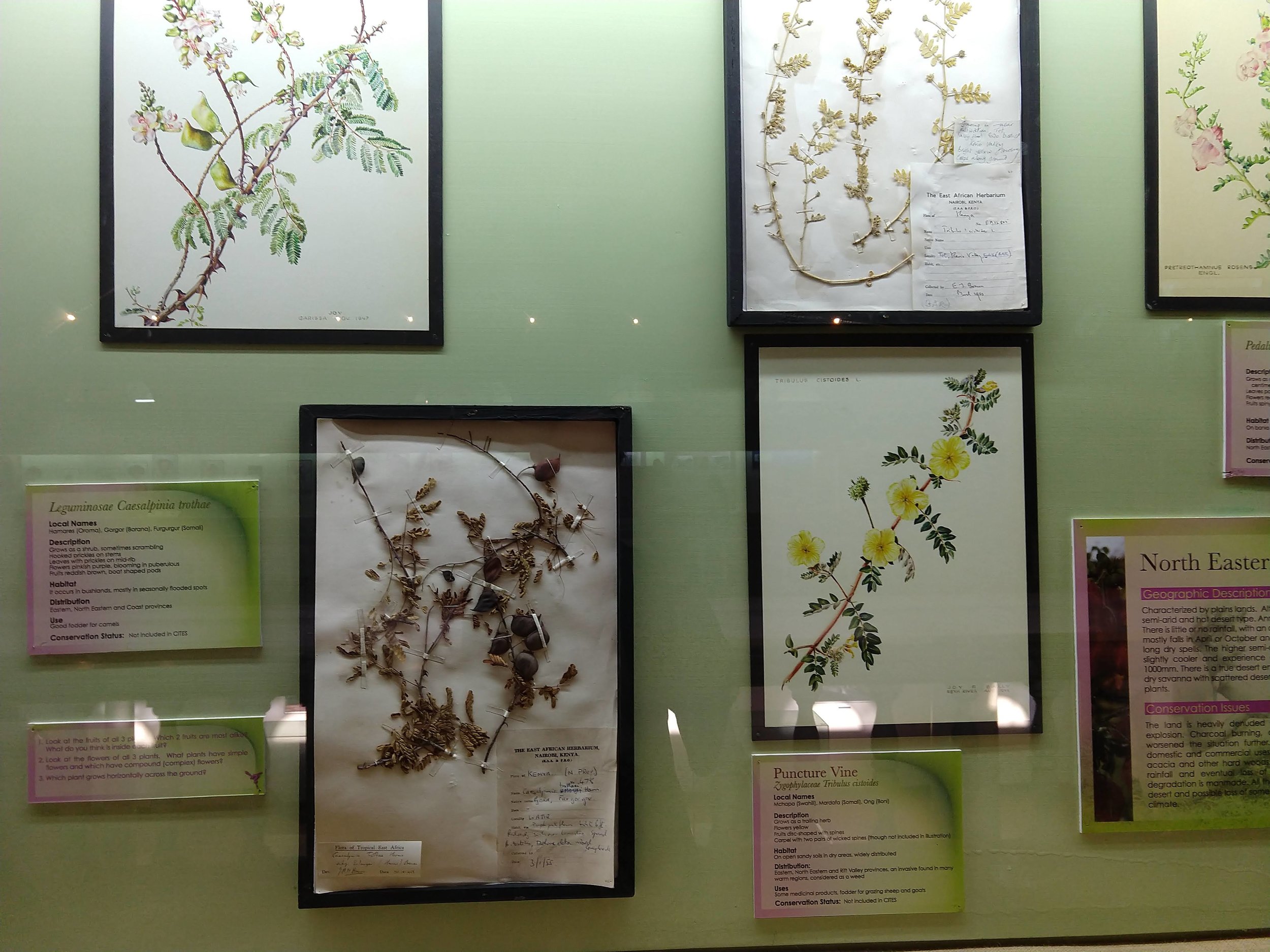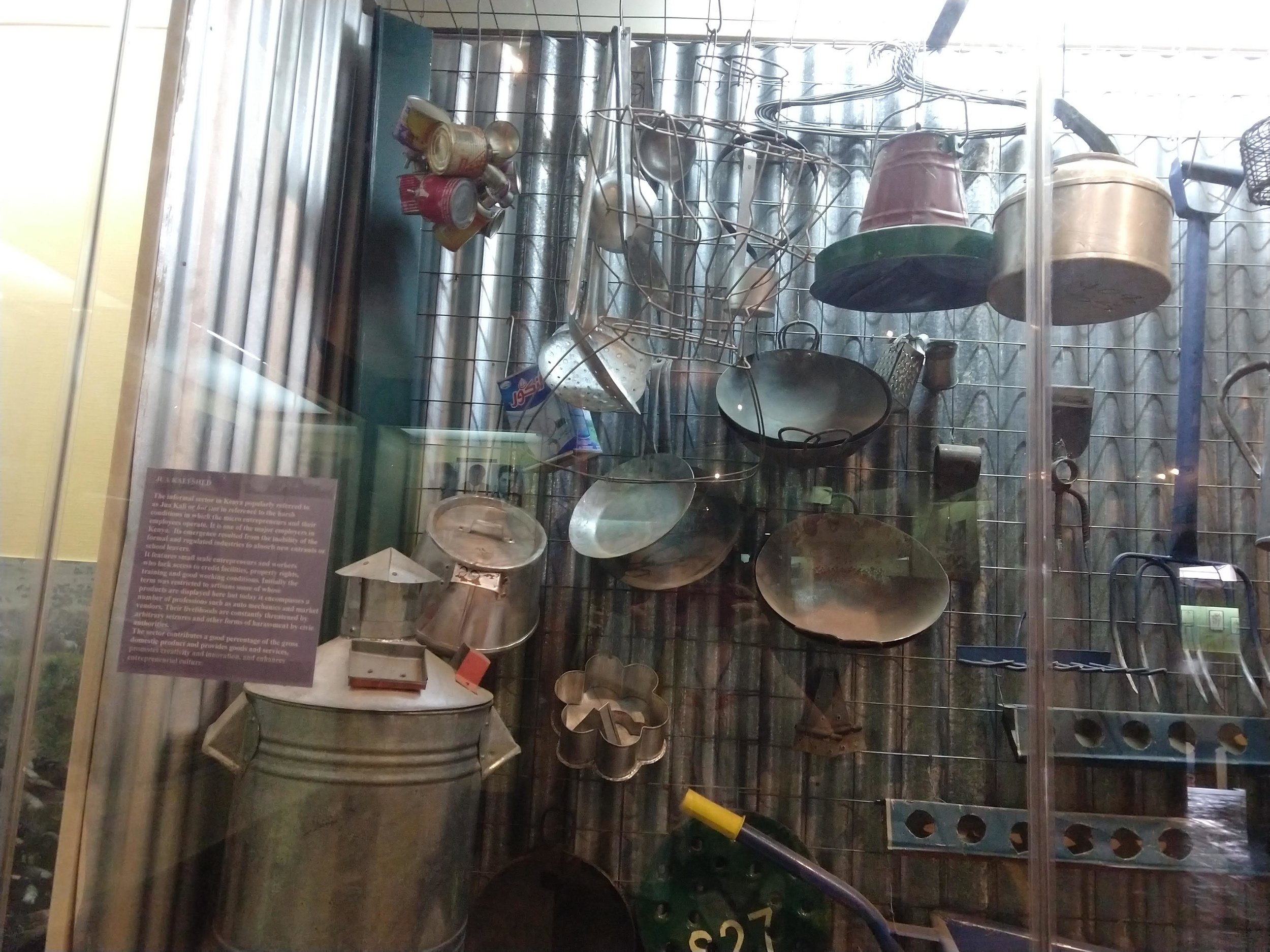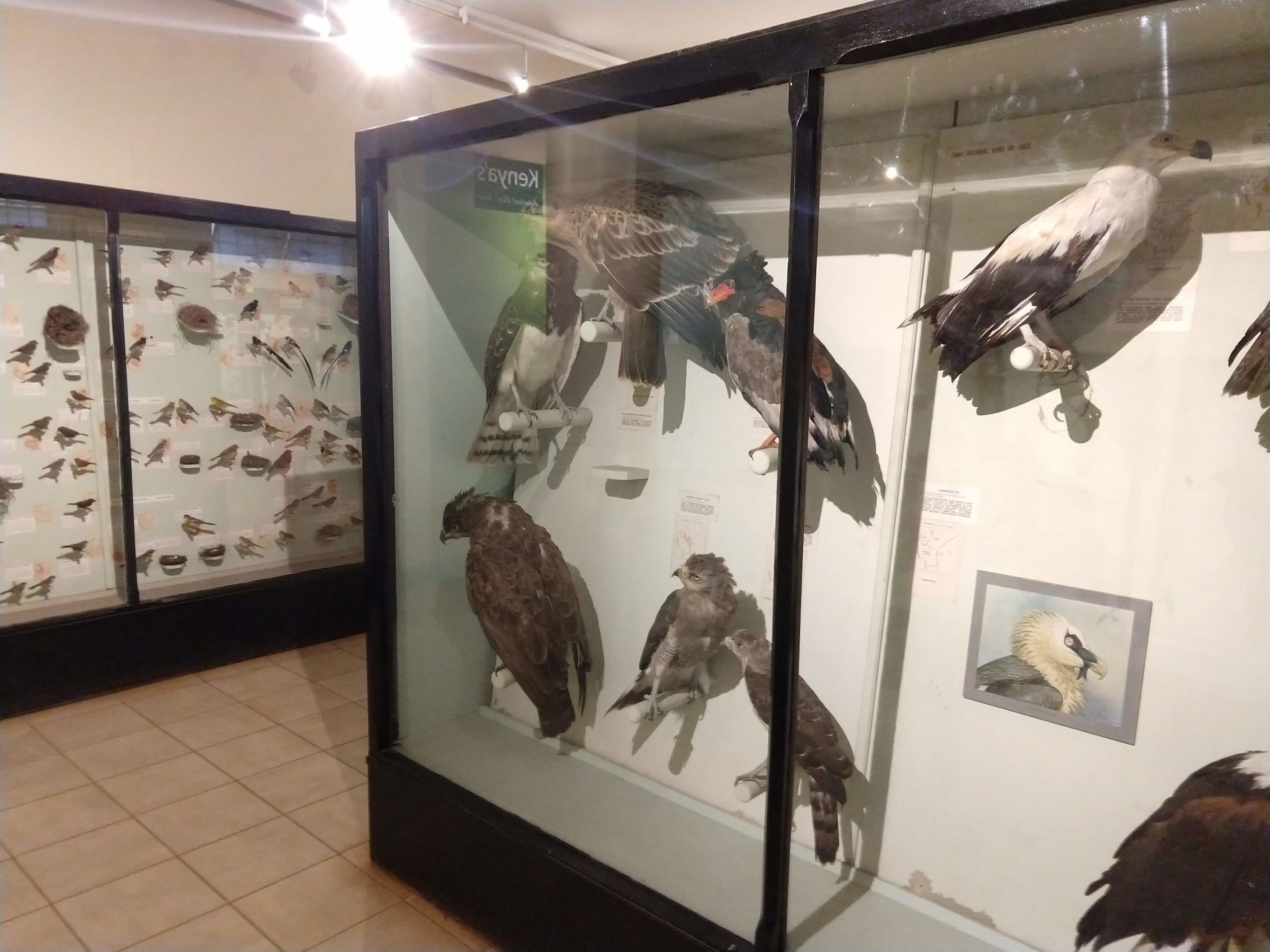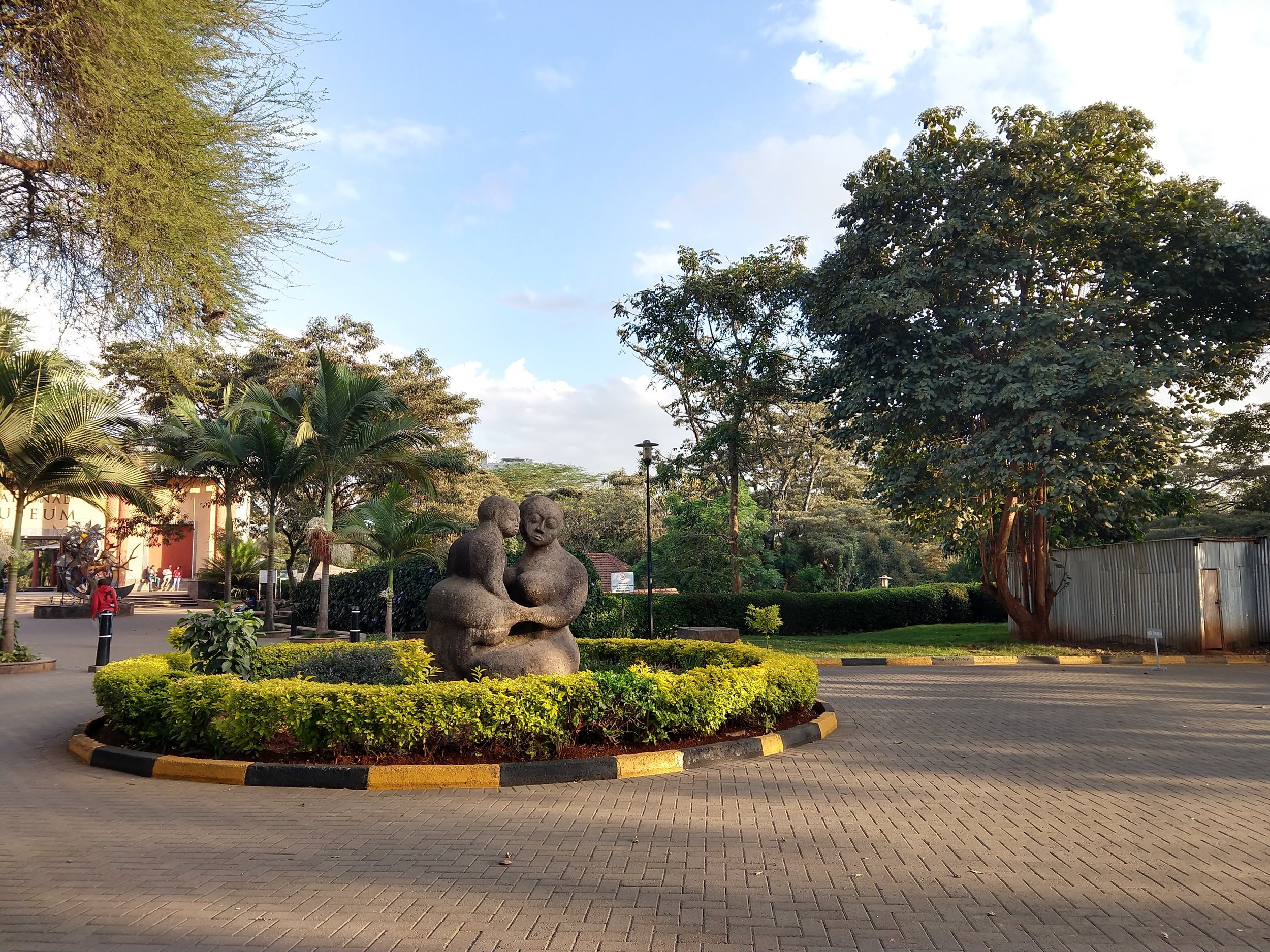GSP 14: The great Kenya yarn hunt and an ethics question
Until Kenya, I’d seen little of Africa’s famous countryside or wildlife. But my hosts there split life between Nairobi and a smaller city. As their guest, that meant I got to see both places, too — as well as a game park in between.
My visit began in the capital, where my hosts picked me up at the airport on a Friday night, then whisked me to their apartment for a multi-course introduction to Kenyan cooking.
Because the couple chooses to invest more in the school fees of children who couldn’t get an education otherwise, they did not have labor-saving devices like a refrigerator or washing machine. As a result, they would normally give much of Saturday to time-consuming chores like laundry.
Saturday appeared a popular day for laundry — a task often done by hand.
On my account, though, they took a mini holiday to visit the Kenyan museum (sadly, not far from the January 2019 attacks at a hotel complex).
Though the museum space itself wasn’t large, it held a very diverse collection, including a wide array of taxidermies; watercolors by an important documentarian; a history of the country before and after colonialism; and even a 400-something flock of stuffed birds that catalogued every species in east Africa. I could have spent far longer there.
At weekend’s close Sunday afternoon, the husband drove his wife and I north to Nakuru, where she teaches at a school and looks after three children they’re helping through school (the oldest a college student, the youngest around 8 or 9).
The yarn yarn
As Kenya’s third or fourth largest city, Nakuru hardly entails a village, but it nonetheless brought me closer to rural life. Along the way, we passed countless herds of sheep and some cows, sometimes led by figures wearing the Masai tribe’s distinctive red-and-black plaid blankets. Other times, the herdsmen wore western attire and stared down at their cell phones while the livestock grazed.
Inspired by this sight of both woolly creatures and blankets I assumed showcased the fruit of shearing sheep, I had high hopes of finding Kenyan wool in Nakuru. Alas, it was not to be.
One afternoon, the college student and I caught a mutatu into town to buy some ingredients for a pasta dish I promised to make … and to look for Kenya-sourced wool. We had a little difficulty finding shops that sold yarn, but eventually succeeded.
Mutatus waiting for passengers at a busy station near a Nakuru market. This shows only a fraction of the vans waiting to depart.
The first shop had only acrylic yarn. When I pressed them about true wool, the person we spoke to eventually claimed that they had “banned” wool in Kenya for reasons unexplained. Though this came to me through translation, I found the story very fishy.
So we persisted. After one or two more dead ends, we decided the Masai market might be our best chance. After all, who better to make and sell products of sheep than those who raise them?
I still maintain the soundness of that reasoning, but it proved no match for the Masai market. Once we reached the cluster of stalls at the end of Nakuru’s main street, we found only more acrylic upon acrylic upon acrylic.
“Masai” blankets? Made from acrylic (their plaids seem to be en route to becoming a kind of east African Burberry). I even did a burn test on some yarn a man unearthed from an offsite storage spot.
No dice.
Our Masai market errand: unsuccessful. Shopping for dinner ingredients: More successful. The market had far more produce stands than shown here, but this gives some sense of the wonderful options for local, organic produce that I saw throughout Africa.
If my yarn quest ended badly, however, Nakuru provided other excitement, in the form of my brief stint as a local curiosity to rival a visiting politician.
The ethics of photography while traveling
Contact with local children started as soon as I took my first trip on foot from the house. In what would become the script for countless conversations ahead, a group of children would spot me and start excitedly saying, “Muzungu! Muzungu!”
So the word sounded to my ears, anyway. Also spelled “mzungu,” I first learned this Swahili word for white person during my short stay in Rwanda.
Once someone got their courage up, a child would call out, “How-ah-yew?”
“I’m fine, thanks,” I’d reply. “How are you?”
To which they usually responded “Fine.”
Less frequently, a child got up the courage to come shake my hand. Once one did so, usually several others would run up to do the same.
School children walking home one afternoon.
The bravest of all, though, ran up to me one afternoon in the golden light just before dusk, and asked that I take a picture with her.
“Do you have a phone?” I asked. The girl shook her head, indicating that I should take the picture on the phone that I, as a mzungu, obviously owned.
When I pulled it out, the girl wrapped her arm around my neck as if she never wanted to part, flashed a big smile, then ran off into the night. I later learned from my hosts that her nearly black skin identified her as Sudanese, and therefore a refugee child.
With the complex history and complicated legacy of colonialism, I hesitate most to take portraits of people in Africa. As this look at west African photographers notes, “Foreign photojournalists covering Africa have tended to focus on poverty and suffering.” Though I have included some photos of people in this post, I hope they show more of the ordinary moments I was privileged to share during my stay: waiting for transit; shopping for groceries; walking home.
In the end, I don’t know what honors that child’s desire most: to take a picture I’ve only showed others on my phone, or to include it in this story. Because she’s recognizable, and we didn’t discuss what she wanted me to do with it, I’ve opted not to post it.
For portraits of Africa — by Africans — check out photographers like Fati Abubakar of Nigeria (@bitsofborno) and Eyerusalem of Ethiopia (@eyerusalem_a_jiregna).
After my week in Nakuru, we headed back to Nairobi, this time by a higher-end mutatu (translation: seat belts, no aisle-spanning board seats and no more passengers than for whom belts existed).
Interviews came more slowly in Kenya, but my stay brought several visits with friends, a chance to make sourdough bread … and finally a successful yarn mission.
Country snapshot
Some days in Nairobi, I managed to walk home. Shown here: a driveway passed in the wealthier neighborhood of Karen.
Beer: $1.53 from the grocery store. Most of the African Christians I met did not drink at all, so I tried to respect my hosts’ own customs in what I bought.
Water: Drinkable after SteriPen treatment. An American friend’s home had large, office-style coolers; otherwise locals drank bottled water.
Visa: $50 + nominal processing fee, for Americans. The online application was pretty straight-forward and took a few days (though I had to look up the status - no notification).
Transportation: Uber cost a bit more in Nairobi ($6-10, for all but the shortest trips), but proved the best way to reach interviews. I rode mutatus only when I had help getting on the correct one (sometimes a difficult thing to tell, even though many speak English). The higher-end mutatu from Nakuru to Nairobi cost about $4 for the nearly three-hour ride.
Food: Kenyans eat a lot of vegetables and get good fish from either the ocean or some of the lakes, but seem to season their food much more mildly than Nigerians and Ethiopians. Their favorite staple, ugali, is mainly cornmeal boiled with water and stirred to make a large, thick ball you break off in chunks to dip into the sauce of your food.
Phone: Great Google Fi service.










